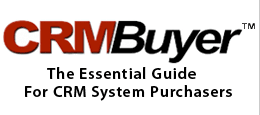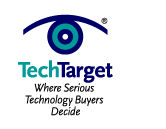Everybody has a year-end synopsis these days and it’s fun to see what each person deemed important. Sometimes you wonder if you lived through the same experiences but it’s a good thing to recall everything one more time and maybe reconsider how you’ll remember each. Here’s my synopsis which is no more or less valid than anyone else’s.
Marketing’s resurgence might be the most interesting development of ‘12 for several reasons. First, the switch to marketing from other areas of emphasis (like service) shows that many people in the CRM universe feel that the economy is not only healing but returning to form. In the last few years, social and service, and often the two together, were the CRM market drivers but with marketing showing new vigor, it suggests to me that next year will see business accelerate. Maybe that won’t take us all the way back to 2008 but what it will be an improvement.
Also, marketing’s renaissance comes via a social salient, especially in using analytics to better understand and segment markets. Analytics tells me that vendors need ultra low cost ways to get to their customers because the economy is still weak and no one wants to hire people so they’re going for automation and software. That’s just the new reality and I hate to be bringing the news. Many markets are price driven — as opposed to quality or service driven — and companies are trying to give customers what they want.
And speaking of price driven and automation, there’s been a nice uptick in the number of vendors offering software robots that can at least triage a service call. That includes VirtuOz, a CRM Idol finalist and personal favorite.
Big Data hit CRM through the link to analytics and marketing and companies like Dun and Bradstreet, Lattice Engines and InsideView are all taking a cut at this important space. Another one worth checking out is Awareness, another CRM Idol finalist. They do cool stuff in applying analytics to the big data pile captured with social media. In all, social and analytics have shown us that there’s more to social marketing than sentiment analysis which can only be good for the future of the market.
If marketing is becoming automated and socialized, a similar thing is happening in human resources. Many an HR software vendor has made the leap to the cloud and also to social. The two will radically transform HR from a back office preserve to something much more front office in its orientation. HR is rapidly becoming a specialized case of social front office application with important contributions from Work.com, Jobscience, Vana and lots more.
Also, despite what Gartner said in its recent gamification report, I think the future is largely positive in that market. The major analyst firms put out reports that spell doom when it becomes clear that an early market has gotten frothy and no one in their right minds can reasonably expect the new thing to live up to all the, well, hype.
But the good news about gamification is that it is reaching its adolescence, a time when some of its early adopters will harness it and make it successful. So the good news I see is that the vendors and customers who do it right will be fine and it will be clear who has the goods next year.
Then there’s mobile, mobile, mobile or browser apps, native apps and always connected native apps. Making mobile work this year was the result of a collaboration of infrastructure vendors and people who make the applications. I have noticed recently that wireless vendors are getting aggressive about offering tablet packages for only ten bucks a month to users who subscribe for other devices. Ten bucks is important as it represents a manageable fee so I look for mobile adoption to accelerate now that all the pieces seem to be in place.
Mobile infrastructure comes at the right time also because numerous vendors have put significant development resources into moving their applications to the tablet. HTML5 is robust and popular but so are new CRM applications that run natively adopting all of the pinches and swipes that people like about tablets. Salesforce has a decent solution in Touch and I think we’ll see more vendors produce “develop once, deploy on many devices” solution sets in the year ahead. Over the last couple of years we’ve watched the early stages of PC and Laptop sales tanking and the hockey stickomatic rise of the tablet and the handheld and next year will be the time when mobile puts its foot down on the accelerator.
With mobile’s arrival as a more or less equal in the platform wars we will be witnessing the first true global platform that I have been talking about. A global platform means adding millions of new users and customers to the ranks all at once—ok not ALL, all at once but enough to make you notice. I have a feeling that while a significant portion of those new users will have a good grasp of English, companies that offer bi-lingual interfaces will be the early leaders. The first step will, of course, be to analyze where your traffic comes from and then maybe to pilot a few pages. All this may suggest an opportunity for translation services short term.
But that’s next year. For now, thanks for continuing to read this space and please come back in 2013.
 CRM Magazine/destinationCRM.com
CRM Magazine/destinationCRM.com CRMBuyer
CRMBuyer ForecastingClouds
ForecastingClouds InSide CRM
InSide CRM SearchCRM
SearchCRM Animal Spirits
Animal Spirits Butterfly Economics, Paul Ormerod
Butterfly Economics, Paul Ormerod Competing on Analytics: The New Science of Winning
Competing on Analytics: The New Science of Winning Crowdsourcing
Crowdsourcing Dealing with Darwin, Geoffrey Moore
Dealing with Darwin, Geoffrey Moore Hello, Ladies! Dispatches from the Social CRM Frontier
Hello, Ladies! Dispatches from the Social CRM Frontier Origin of Wealth: Evolution, Complexity, and the Radical Remaking of Economics
Origin of Wealth: Evolution, Complexity, and the Radical Remaking of Economics Strategy and the Fat Smoker
Strategy and the Fat Smoker The Black Swan
The Black Swan The Wisdom of Crowds
The Wisdom of Crowds Twitter
Twitter